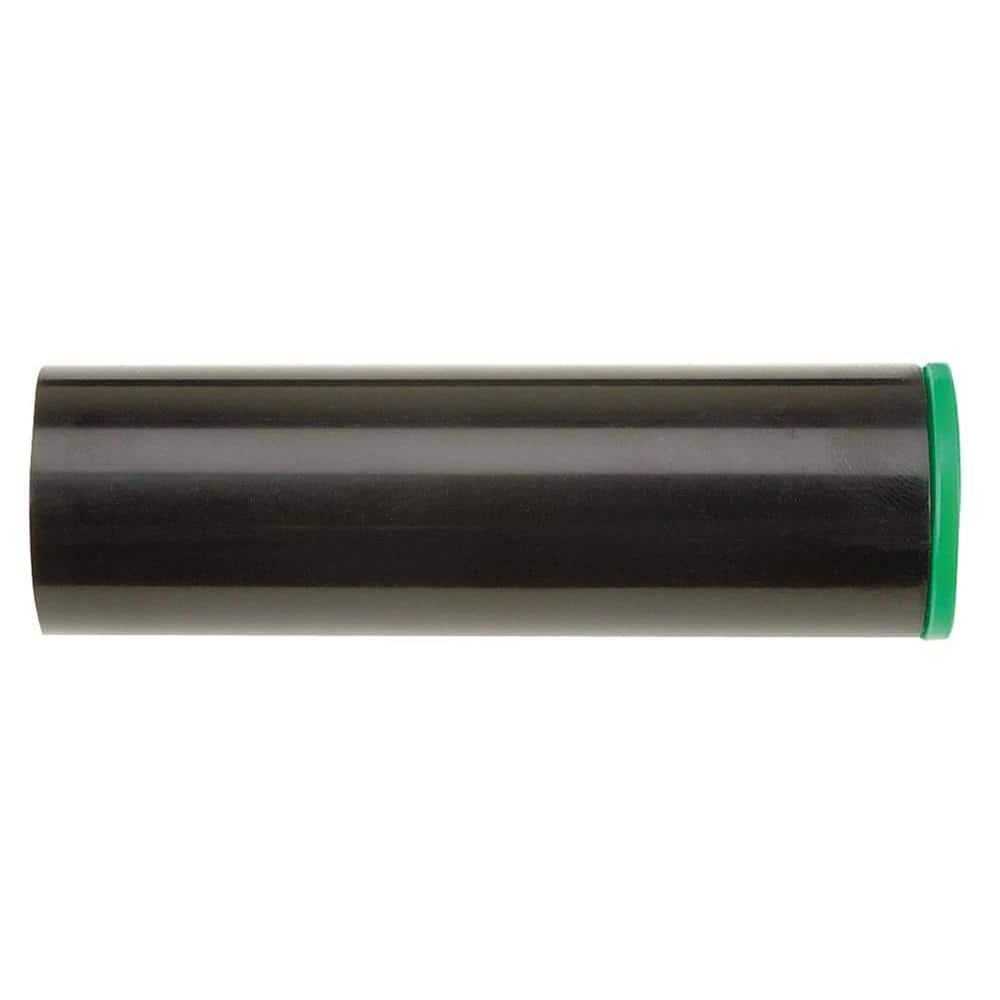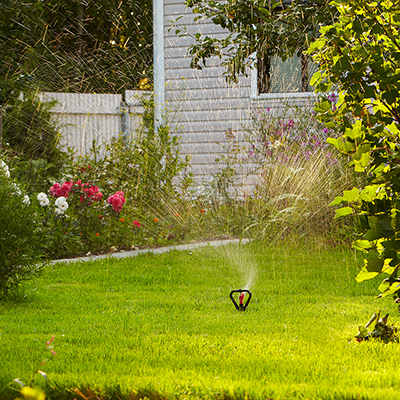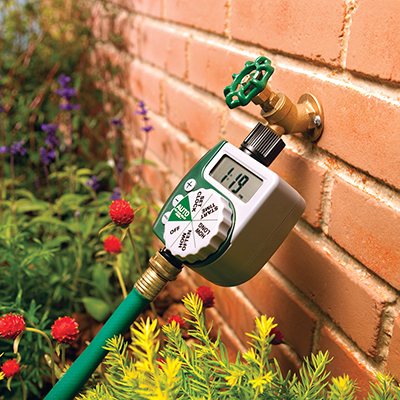Drip Irrigation Buying Guide

Last updated September 7, 2023
While standard sprinklers and automated in-ground irrigation systems can both provide ample amounts of water to your yard, they are not as efficient and effective when it comes to watering gardens, plants and other hard-to-reach areas. Drip irrigation, with its flexible features and low-pressure emission, deposits water only where it's needed, preventing it from being wasted and saving you money in the process.
Rather than casting a wide spray or steady stream of water over a large area, drip irrigation dribbles out tiny quantities of water to provide steady soaking in specific places.
Table of Contents
Types and Applications
Components
Kits & Features
Types and Applications
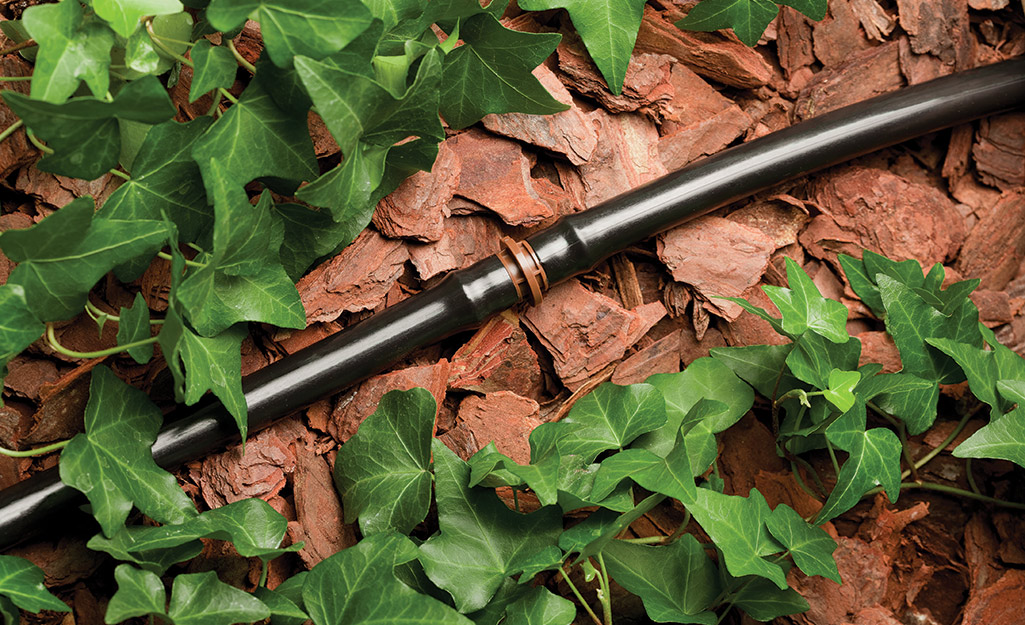
Drip irrigation types:
- Drip: Delivers water one drop at a time to keep roots moist. Recommended for container plants, flower gardens and vegetable gardens.
- Emitter line and drip tape: Provides saturation coverage along the entire line and has equally spaced emitters built in. Recommended for vegetable gardens, flower gardens and raised garden beds.
- In-line drip: Placed between sections of tubing to allow water to drip out as it flows through. Recommended for hedges, shrubs and landscaping.
- Punch-in: Inserted through a hole in the pipe and feature a ridge on the inlet barb that prevents them from popping out; allows for customized flow rates and water pressure. Recommended for soils ranging from clay to sandy container plants on decks, gardens and landscaping.
Installing drip irrigation is a snap for any motivated do-it-yourselfer. Consider which areas of your yard need it the most and take measurements to determine how much pipe or hose will be required.
Drip irrigation can be buried underground or laid on the ground and covered with mulch.
- Use drip irrigation to water oddly shaped sections of your lawn, hanging baskets or vines growing on a trellis that cannot be reached by normal sprinklers or manual watering cans.
- Laying strips along your landscaping will provide just the right amount of water for plants and shrubs without wasting any on a nearby sidewalk.
- Weaving drip irrigation through your garden or burying it just underneath the soil will ensure that crops get the proper amount of hydration.
- As with traditional automatic irrigation systems, you may need to winterize your drip system if you live in a cold climate that experiences freezing temperatures during the fall and winter.
Components
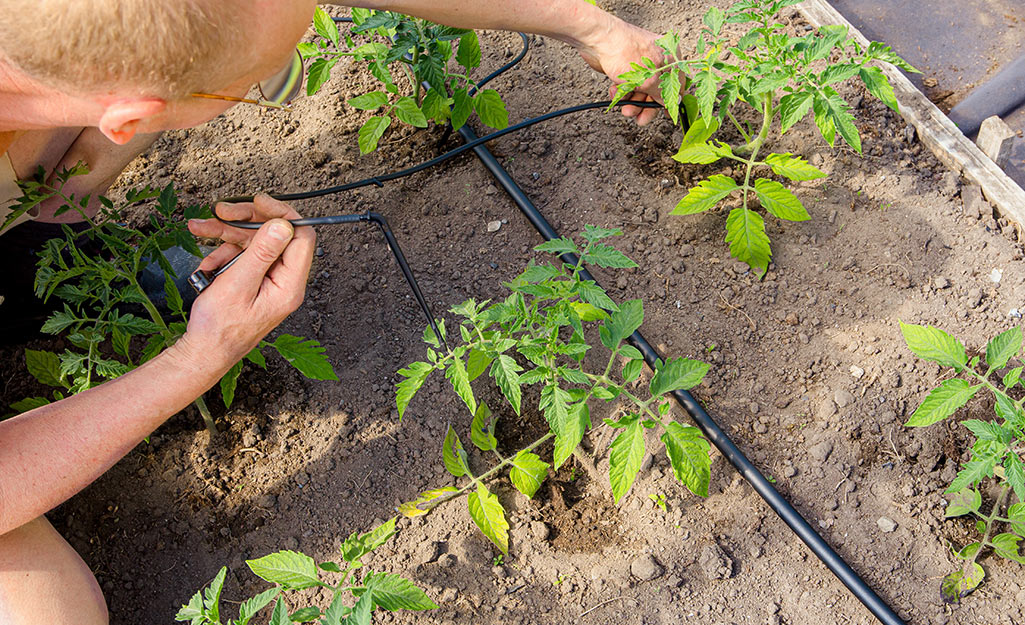
There are a number of components you need for your drip irrigation system. Preassembled kits make it easy to find all of the components you need for each specific watering purpose. Water can be dispersed through emitters, micro-sprinkler heads, foggers or sprayers.
- Pipe, also called tubing or hose, is the line through which water runs. It can be connected to any outside faucet.
- Add a filter to ensure that minerals and other debris are removed from the water before it reaches your plants, particularly if you're drawing from a nearby stream or river.
- If you don't already have one in place, install a backflow preventer, or vacuum breaker, to stop contaminated water from flowing back into your water supply.
- A Y-shaped connector can connect drip irrigation and a hose to a faucet simultaneously.
- Supply and header lines are usually 1/2-inch in diameter while lateral lines are 1/4-inch.
- A pressure regulator maintains steady water pressure for better operation.
- Elbowand T-shaped connectors provide multiple installation options.
- Foggers create a fine mist that is ideal for watering hanging plants and flowers.
- Micro-sprinkler heads function like regular sprinklers at lower pressure and volume.
Tip: If you're setting up a particularly long run or need to go up and down hills, look for pressure-compensating emitters, which maintain a steady flow rate despite changes in water pressure along the line.
Kits & Features
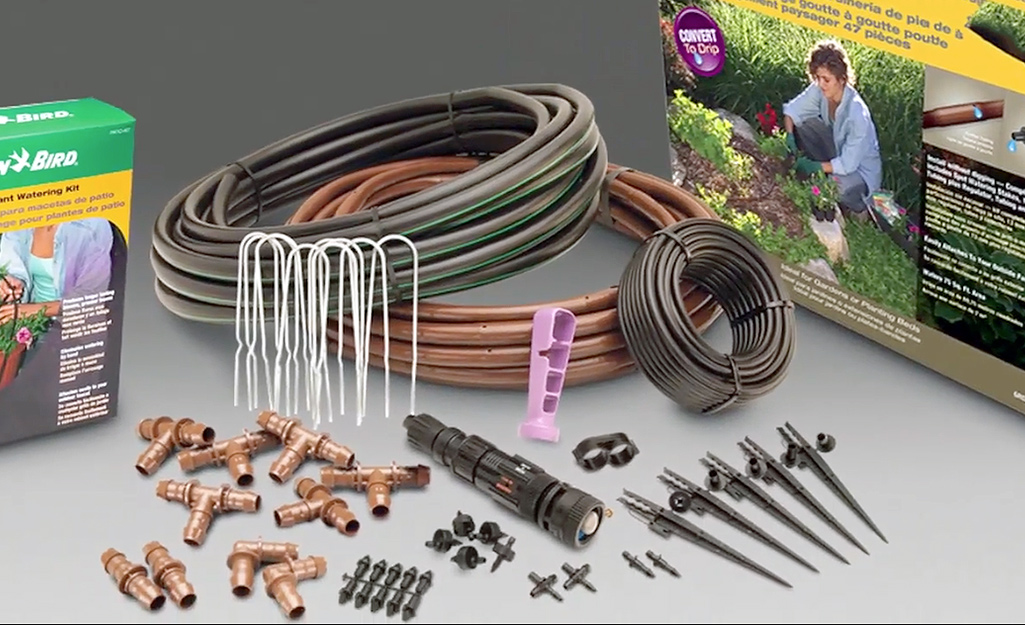
Drip irrigation kits are available for specialized needs. Because they're designed for specific purposes, kits are very effective when it comes to providing just the right amount of hydration to your landscape.
Kits:
- Garden drip watering kits precisely water shrubs, bushes, trees, vines and vegetables.
- Micro-sprinkler kits are ideal for flowerbeds, groundcover, hillsides, large trees and any other densely planted areas.
- Use retrofit kits to convert your existing irrigation system to a drip irrigation system.
- Patio kits efficiently water plants in pots and baskets whether on the ground or hanging.
- Drip soaker kitsare specially designed for irrigating row crops and vegetable gardens.
Features:
- Timers: If you're away on vacation or in the midst of a busy week, use an automatic timer to ensure that your plants, landscaping and garden receive the water they need.
- Stoppers: Sometimes called "goof plugs," stoppers allow you to plug an emitter hole if you need to temporarily pause watering, such as when you rearrange your landscaping or if you relocate the tube to another area.
- Fertilizer injector: If your garden isn't quite growing as well as you'd like, use a fertilizer injector to add nutrients to your drip irrigation line, which will then water and fertilize plants simultaneously to save you time and effort.
Need help identifying a tool or material? Find products fast with image search in The Home Depot Mobile App. Snap a picture of an item you like and we'll show you similar products.



